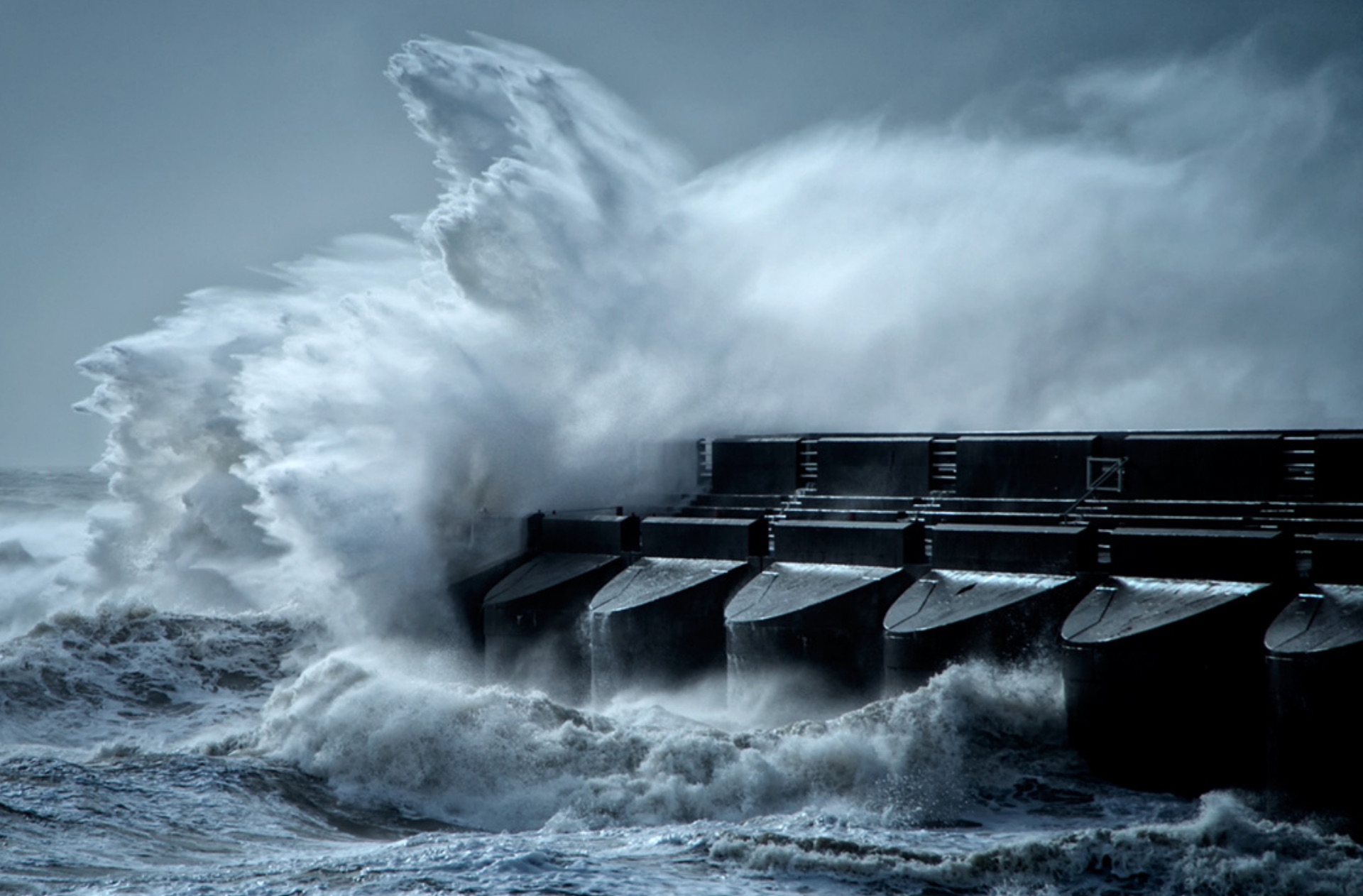Written by Jessica Skolnick, CFA and Adam Bernstein, ESG / Impact Analyst
Our macro updates are usually focused on the “will they or won’t they?” decisions of the Federal Reserve and the market and economic impacts of those decisions. With no FOMC meeting on the calendar for August, this month we will focus on the recent volatility in long term rates, over which the Fed has much less control than it does on the shorter end of the curve.
Interest Rates
One of the key discussion themes at our Investment Committee meeting in the past several months has been whether it makes sense to lengthen the duration of our fixed income portfolios. As detailed in our prior blogs and commentary, we are bearish on the stock market and longer duration high quality bonds have traditionally provided ballast in portfolios when equities decline because investors flock to the safety of government bonds in periods of turmoil. This increase in demand results in lower yields and higher prices, with the biggest price increases in the longest duration bonds. In that way, longer term bonds can hedge equity market risk by moving up when markets move down.
Despite this historical relationship, our Investment Committee has continued to keep our bonds short duration and high quality. While we believe we are eventually going to experience a reckoning in the stock market, we do not know when it will occur. Meanwhile, the yield curve has been deeply inverted for months. The yield differential between the 2-year Treasury and the 10-year Treasury peaked at over 108 bp[1] in March and again in July. Usually, reaching for a higher yield in bonds means taking on more duration or credit risk but today’s inverted yield curve means that investors can obtain a higher yield on bonds that have less risk. Without a compelling reason to give up yield in exchange for more risk, we maintained our positioning.
After the last several weeks, we are very happy with that decision. The 10-year Treasury has risen from a near-term low of 3.75% on July 19th to close at 4.34% on August 21st, the highest level since 2007,[2] wiping out the year-to-date gains on the Bloomberg US Treasury Index. The move higher was driven by a growing acceptance that the Federal Reserve may keep rates higher for longer due to inflation that remains persistently above target and an economy expanding faster than anticipated. The catalyst was Fitch’s July downgrade of US sovereign debt exacerbated by the Treasury’s announcement that it would be increasing longer-term debt issuance through the end of the year.
Despite the recent run-up in rates, we are still cautious about adding duration to our portfolios. The yield curve inversion narrowed to about 67 bp[3] as of August 21st, but remains significantly inverted relative to history. We also believe that the 10-year Treasury could move higher still. On August 18th, the Atlanta Fed revised its expected GDP estimate for Q3 up to a whopping 5.8%,[4] and we expect CPI to stabilize or move higher as a result of reduced base effects, a new health insurance adjustment in September and a potential reacceleration in energy and food prices. A 10-year Treasury rate above 5% seems crazy in the context of post-financial crisis QE and zero interest rate policy but is unexceptional when compared to most of history.
ESG Update: The Return of El Niño and its Investment Implications
In our latest blog we detailed some investment implications associated with El Niño climate patterns and a warming world. An El Niño is the abnormal warming of the sea surface temperatures in the central and eastern tropical Pacific Ocean. It’s part of a larger climate cycle called the El Niño-Southern Oscillation (ENSO) that occurs on average every 2-7 years. In the blog we discussed why El Niños have historically dragged down GDP production and raised inflation forecasts. Generally, El Niños are inflationary because they increase food and energy prices along the following transmission mechanisms:
- They negatively affect countries where heat-exposed work makes up a large percentage of GDP.
- Extreme heat overloads energy grids which cause “load shedding” and blackouts that increase energy demand and energy prices.
- Many critical crops like corn have a higher likelihood of failing if temperatures get too high, which pushes up food prices.
The types of inflationary El Niño forces summarized here and detailed in our last blog are all related to the heating effect of the climate cycle, but warm temperatures are not the most direct way El Niños affect the global economy. The knock-on effects of a warmer climate cycle include droughts and sea level shifts which have a more direct impact on people and property. Droughts can damage crops, livestock, and infrastructure, while sea level changes can inundate coastal areas and displace people. Warming, on the other hand, is a more gradual process and its impacts are less immediate.
The COVID pandemic was the first time we realized how fragile our “just-in-time” delivery model was. Today, supply chains have returned to normal operations and, as a result, goods inflation has normalized. But pandemic shutdowns are not the only way goods inflation can be shocked and supply chain routes can fail. “An increasing amount of climate-driven extreme weather events are taking their toll on the world’s major shipping routes.”[5] Collectively, there are seven international trade choke points where ~53% of global GDP passes through annually. The following are the estimated percentages of global GDP that pass individually through the seven international trade choke points:
- Strait of Hormuz: 20%
- Strait of Malacca: 12%
- Suez Canal: 10%
- Panama Canal: 5%
- Bab el-Mandeb Strait: 3%
- Bosphorus and Dardanelles: 2%
- Strait of Gibraltar: 1% [6]
“The low sea levels around the Suez Canal prompted by drought conditions have caused Maersk to load approximately 2,000 containers fewer than usual on the same vessel. Typically, container ships might need to comply with a maximum depth of 50 feet on the Panama Canal. Current restrictions require ships to adhere to 44 feet of draft, forcing container ships to either weigh less or transport fewer goods.”[7] This is an example of how climate change is adding acute risk to the consensus core goods inflation projections and interest rate decisions of the Fed.
Today, investors are focused squarely on services inflation because goods inflation has already retreated to below the desired ~2% level while services inflation stubbornly stands at 6.1%, as of the August CPI reading.[8] Most of the major investment houses we speak with believe that continued normalizing supply chain pressures are a reliable leading indicator of core goods prices and will continue to depress goods inflation. They also believe that services inflation is in a downtrend and, as a result, Powell’s inflation checklist is close to being complete, making the July hike the final hike of the cycle.
Given what we know about El Niño inflationary pressures, and specifically the potential for them to cause goods inflation spikes, we remain unconvinced by this market narrative. In May 2021, the Ever-Given ran aground blocking trade in the Suez Canal from both directions. The Suez Canal facilitates almost $10 billion of goods daily so the six-day blockage is estimated to have resulted in $60 billion of disrupted trade and the subsequent trapping of ~$700 million in cargo.[9] The Ever-Given event has demonstrated that while a blockage of any global maritime chokepoint for any reason can have a significant influence on goods inflation, El Niño conditions and climate change make these types of economic destructive events more likely and will continue to limit the growth of economies that rely heavily on global exports.
____________________________________________
Please Join Us for Several Events During Climate Week NYC

The Nest Climate Campus
The Javits Center, NYC
September 19th – 21st
Complimentary Three-Day Event Pass
and
Thursday, September 21st
Complimentary Gitterman Breakout Sessions
Issues at the Intersection of Climate and Capital
*Please Note: To attend our Breakout Sessions on 9/21, you must also register for the Three-Day Event Pass in order to enter The Javits Center
____________________________________________
Climate & Capital Conference
New York Stock Exchange
Wednesday, September 20th
Register for Complimentary Livestream
____________________________________________
[1] Bloomberg, as of 8/22/2023 [2] Bloomberg, as of 8/22/2023 [3] Bloomberg, as of 8/22/2023 [4] Atlanta Fed GDPNow, https://www.atlantafed.org/cqer/research/gdpnow, as of 8/22/2023 [5] Here’s the inflation breakdown for July 2023, in one chart (cnbc.com) [6] Bard, Google AI. “% of GDP that passes collectively and individually though the 7 international trade choke points.” Bard, Google AI, 8/22/23. [7] Here’s the inflation breakdown for July 2023, in one chart (cnbc.com) [8] Bloomberg, as of 8/22/2023 [9] High seas: Enabling a climate resilient Suez Canal (marsh.com)____________________________________________




